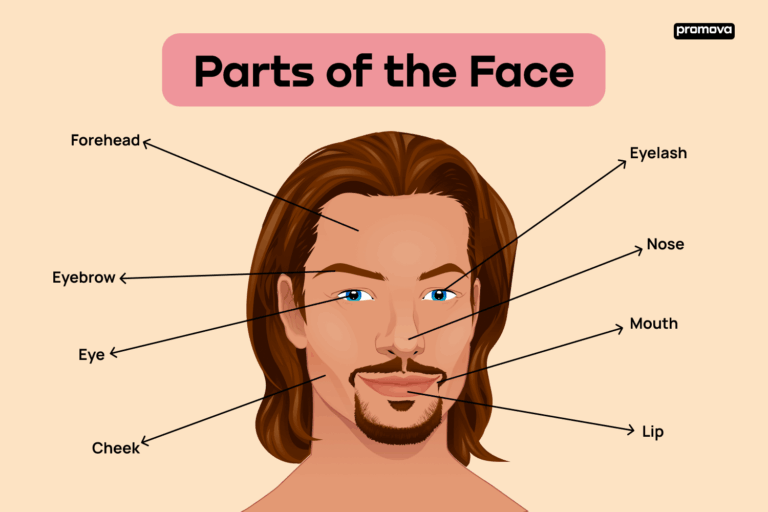Best And Worst Car Brands 2019: A Comprehensive Guide for Savvy Car Buyers
Best And Worst Car Brands 2019: A Comprehensive Guide for Savvy Car Buyers cars.truckstrend.com
The automotive landscape is a dynamic realm, with manufacturers constantly striving to innovate, improve, and capture the hearts (and wallets) of consumers. For anyone considering a significant purchase like a car, understanding which brands excel and which falter is paramount. The year 2019 offered a fascinating snapshot of this competitive environment, with various independent organizations and consumer surveys shedding light on the best and worst performers across critical metrics like reliability, owner satisfaction, safety, and value.
This comprehensive guide delves into the "Best and Worst Car Brands of 2019," exploring the methodologies behind these rankings, highlighting the brands that stood out at both ends of the spectrum, and providing actionable insights to help you make informed decisions, whether you’re looking back at the market or planning a future purchase. Knowing which brands consistently deliver quality and which present potential pitfalls can save you significant time, money, and headaches down the road.
Best And Worst Car Brands 2019: A Comprehensive Guide for Savvy Car Buyers
Methodology Behind the Rankings: What Makes a Brand ‘Best’ or ‘Worst’?
Determining the "best" and "worst" car brands is not a subjective exercise but rather a data-driven process relying on rigorous evaluation by reputable organizations. Key players in this space include Consumer Reports (CR), J.D. Power, Kelley Blue Book (KBB), and the Insurance Institute for Highway Safety (IIHS), among others. Each employs specific methodologies, but they generally converge on a common set of crucial criteria:
- Reliability: This is often the cornerstone of any brand ranking. It assesses the frequency and severity of problems reported by owners during a specific period (e.g., the first three years of ownership for J.D. Power’s Dependability Study, or comprehensive data collected by Consumer Reports). Categories include engine, transmission, electronics, body hardware, climate system, and more. A brand with fewer reported issues, particularly severe ones, ranks higher.
- Owner Satisfaction: Beyond just reliability, this metric gauges how happy owners are with their vehicle experience overall. It encompasses driving enjoyment, comfort, features, styling, fuel economy, and the overall perception of value. High owner satisfaction often correlates with a positive long-term relationship with the brand.
- Safety: Independent crash tests (e.g., by IIHS and NHTSA in the U.S.) are crucial. They evaluate how well a vehicle protects its occupants in various types of collisions and the effectiveness of its active safety features (e.g., automatic emergency braking, lane-keeping assist). Brands consistently earning "Top Safety Pick+" or 5-star ratings fare better.
- Performance and Driving Experience: This covers aspects like engine power, handling, braking, steering responsiveness, and overall refinement. While somewhat subjective, expert reviews and consumer feedback contribute to this assessment.
- Value for Money & Cost of Ownership: This goes beyond the initial purchase price to include factors like depreciation, fuel efficiency, insurance costs, maintenance expenses, and the projected cost of repairs over time. A car that holds its value well and is inexpensive to run offers better long-term value.
- Technology and Innovation: The integration and user-friendliness of infotainment systems, advanced driver-assistance systems (ADAS), connectivity features, and powertrain innovations (e.g., hybrid or EV technology) play an increasing role in rankings.

By weighting these factors, these organizations compile comprehensive scores that offer a holistic view of a brand’s performance, providing invaluable insights for potential buyers.
The Pinnacle of Performance: Best Car Brands of 2019
In 2019, several brands consistently rose to the top, cementing their reputation for quality, reliability, and customer satisfaction. These brands typically excelled across multiple metrics, offering peace of mind and an enjoyable ownership experience.

- Lexus: Consistently a top performer, Lexus often led the pack in reliability studies like J.D. Power’s Vehicle Dependability Study. Owners praised their vehicles for luxurious, quiet cabins, refined performance, and exceptional build quality that stood the test of time. Their commitment to customer service also contributed to high owner satisfaction.
- Toyota: As the parent company of Lexus, Toyota’s strong performance was no surprise. Renowned for legendary reliability, excellent resale value, and a broad lineup of practical, fuel-efficient vehicles, Toyota remained a go-to choice for millions. Models like the Camry, RAV4, and Highlander were perennial best-sellers, known for their durability.
- Mazda: Mazda continued its impressive climb in 2019, frequently ranking highly in Consumer Reports’ brand scores. While perhaps not as overtly luxurious as some premium brands, Mazda distinguished itself with engaging driving dynamics, stylish designs, and an increasingly premium feel, all while maintaining strong reliability scores.
- Subaru: With its standard all-wheel drive and strong safety ratings (often earning IIHS Top Safety Pick+ awards), Subaru appealed to buyers seeking practical, adventure-ready vehicles. Brands like the Forester, Outback, and Crosstrek were celebrated for their versatility, reliability, and strong resale value.
- Porsche: For those in the luxury and performance segments, Porsche consistently delivered. Despite being high-performance vehicles, they frequently ranked surprisingly high in reliability and owner satisfaction, proving that thrilling performance doesn’t have to come at the expense of dependability.
- Genesis: Hyundai’s luxury arm, Genesis, quickly established itself as a strong contender. In 2019, it often ranked among the top brands for initial quality and dependability, offering a compelling blend of luxury, technology, and value that challenged established premium marques.

Common traits among these top performers included robust engineering, stringent quality control, a focus on long-term durability, and a clear understanding of what their target customers value. They offered a blend of practicality, performance, and peace of mind that resonated strongly with consumers.
Navigating the Bottom Rung: Worst Car Brands of 2019
Conversely, some brands struggled to meet consumer expectations in 2019, often plagued by persistent reliability issues, lower owner satisfaction, or outdated technology. While even these brands might have individual models that perform adequately, their overall brand performance often indicated areas needing significant improvement.
- Fiat: Consistently at or near the bottom of reliability and owner satisfaction surveys, Fiat struggled with numerous issues, particularly electrical problems and infotainment glitches. Their limited model range and perceived lack of long-term durability contributed to their low standing.
- Land Rover: Despite their luxurious appeal and off-road prowess, Land Rover vehicles frequently ranked poorly in reliability. Owners often reported a high incidence of mechanical and electrical issues, leading to significant repair costs and frustration. High depreciation also impacted their overall value proposition.
- Alfa Romeo: While lauded for their stunning designs and engaging driving dynamics, Alfa Romeo vehicles, particularly the Giulia and Stelvio, were often cited for reliability concerns, especially with their complex electronic systems. This often overshadowed their performance merits in rankings focused on dependability.
- Chrysler/Dodge/Jeep (FCA Brands): While some individual models performed better, the FCA group (now Stellantis) brands frequently appeared in the lower half of reliability rankings. Issues with infotainment systems, electrical components, and sometimes transmissions were commonly reported across the lineup. This led to lower owner satisfaction and higher long-term ownership costs for some models.
- Mini: Surprisingly, Mini often found itself in the lower tiers of reliability rankings in 2019. While offering a unique style and fun-to-drive character, owners reported more mechanical and electrical issues than average, affecting the brand’s overall dependability score.
Common issues among these lower-ranked brands included persistent electrical glitches, expensive and frequent mechanical repairs, poor-performing infotainment systems, significant depreciation, and a lack of refinement or perceived value compared to competitors. For buyers, these issues translated into higher costs of ownership, more time at the service center, and generally lower satisfaction.
Beyond the Rankings: Important Considerations for Car Buyers
While brand rankings provide an excellent starting point, they are not the sole determinant for a purchasing decision. Several other factors should weigh heavily in your assessment:
- Individual Model Performance: A "worst" brand might still produce a highly reliable or otherwise excellent individual model. Conversely, a "best" brand might have a particular model that falls short. Always research specific models you are considering.
- New vs. Used: Reliability concerns can be amplified in used vehicles, especially if they haven’t been meticulously maintained. A "best" brand’s older model might still be more reliable than a "worst" brand’s newer one. Consider certified pre-owned (CPO) programs for added peace of mind.
- Cost of Ownership: Look beyond the sticker price. Factor in projected fuel costs, insurance premiums, maintenance schedules, common repair costs for specific models, and estimated depreciation. A cheaper car upfront might be more expensive to own over five years.
- Your Personal Needs and Priorities: Are you prioritizing fuel economy, cargo space, off-road capability, luxury, or raw performance? Align your choice with your lifestyle. A family needing space and safety will have different priorities than a single person seeking a sporty daily driver.
- Dealership Experience: The quality of service from your local dealership can significantly impact your ownership experience. Research local dealer reviews for sales and service departments.
- Test Drive Extensively: Data is valuable, but nothing replaces personal experience. Test drive multiple vehicles under various conditions (city, highway, parking) to assess comfort, handling, visibility, and features.
Actionable Insights and Practical Advice
For anyone navigating the car market, whether looking at 2019 models or applying the lessons learned, here’s practical advice:
- Do Your Homework: Consult multiple reputable sources (Consumer Reports, J.D. Power, Edmunds, Kelley Blue Book) for their rankings and reviews. Cross-reference information to get a balanced view.
- Define Your Non-Negotiables: Before you even start looking, list your must-have features, safety ratings, budget limits, and performance expectations.
- Budget Beyond the Purchase Price: Get quotes for insurance, research typical maintenance costs, and factor in fuel expenses. Use online calculators for depreciation estimates.
- Prioritize a Thorough Test Drive: Don’t rush. Drive the car on roads you typically use. Test all features, including infotainment and driver-assist systems.
- Check Recall History: Use the NHTSA website to check for any open recalls on specific models you’re considering, especially for used vehicles.
- Consider Certified Pre-Owned (CPO) for Value: If buying used, CPO vehicles from reputable brands offer factory-backed warranties and rigorous inspections, mitigating some risks.
- Don’t Be Swayed by Brand Hype Alone: A brand’s reputation is built over time, but individual models can deviate. Always verify with current data.
Table: Best & Worst Car Brands 2019 – Key Performance Indicators
Below is a summary of select best and worst performing brands from 2019 based on general consensus across major industry reports, highlighting their typical characteristics.
| Brand Name | 2019 Performance Category | Key Strengths / Weaknesses | Typical Reliability Score | Owner Satisfaction | Representative Price Range (USD) |
|---|---|---|---|---|---|
| Lexus | Best Performer | Exceptional Reliability, Luxury, Quiet Ride, Strong Resale | Consistently High | Very High | $35,000 – $90,000+ |
| Toyota | Best Performer | Legendary Reliability, High Value, Fuel Efficiency, Resale | Consistently High | High | $20,000 – $60,000+ |
| Mazda | Best Performer | Engaging Driving, Stylish Design, Improving Premium Feel | Above Average | High | $20,000 – $45,000 |
| Subaru | Best Performer | AWD Standard, High Safety, Practicality, Resale Value | Above Average | High | $23,000 – $45,000 |
| Porsche | Best Performer | Performance, Luxury, Driver Engagement, Surprising Reliability | Above Average | Very High | $55,000 – $180,000+ |
| Genesis | Best Performer | Luxury, Value, Technology, Initial Quality | Above Average | High | $40,000 – $70,000 |
| Mini | Lower Tier / Mixed | Unique Style, Fun to Drive | Below Average | Medium | $25,000 – $40,000 |
| Jeep | Lower Tier / Mixed | Off-road Capability, Iconic Styling | Below Average | Medium | $28,000 – $70,000+ |
| Alfa Romeo | Worst Performer | Stunning Design, Driving Dynamics | Low | Medium | $40,000 – $80,000 |
| Land Rover | Worst Performer | Luxury, Off-road Prowess | Consistently Low | Low | $50,000 – $120,000+ |
| Fiat | Worst Performer | Quirky Styling, Compact Size | Consistently Low | Low | $18,000 – $30,000 |
Note: Price ranges are highly approximate and depend on specific models, trims, and options within each brand’s lineup. Reliability and owner satisfaction are general assessments based on 2019 industry reports.
Frequently Asked Questions (FAQ)
Q1: Are these 2019 rankings still relevant for buying a car today?
A1: While specific models and technologies evolve, brand reputations for reliability and quality often persist over several years. Brands that were strong in 2019 are likely still good choices, and those that struggled might still face similar challenges. However, always check the most current rankings for the specific model year you are considering.
Q2: Should I completely avoid cars from "worst" brands?
A2: Not necessarily. "Worst" typically refers to overall brand performance across their lineup. An individual model from a lower-ranked brand might still be a good choice if it has strong independent reviews, a good track record, or fits a very specific niche need. Thorough research on the specific model is key.
Q3: How often do these "best and worst" rankings change?
A3: Major organizations like Consumer Reports and J.D. Power update their brand rankings annually. While there can be shifts, especially for brands introducing new models or implementing significant quality improvements, the top and bottom tiers often remain relatively consistent year-over-year.
Q4: What’s the most important factor to consider when buying a car?
A4: There isn’t one "most important" factor, as it depends on your individual priorities. For some, reliability and safety are paramount. For others, fuel economy, cargo space, or driving performance might take precedence. Define your own hierarchy of needs before starting your search.
Q5: Do luxury brands always perform better in these rankings?
A5: Not always. While many luxury brands (like Lexus, Porsche, Genesis, Audi, BMW) often perform well in terms of initial quality and owner satisfaction, some (like Land Rover or Alfa Romeo in 2019) can struggle significantly with long-term reliability and cost of ownership, showing that a high price tag doesn’t automatically guarantee top-tier dependability.
Conclusion
The "Best and Worst Car Brands 2019" provides a valuable historical perspective on the automotive industry’s competitive landscape. It highlights that excellence in manufacturing is a complex interplay of engineering, quality control, customer focus, and continuous innovation. Brands like Lexus, Toyota, and Mazda consistently demonstrated their commitment to reliability and owner satisfaction, setting benchmarks for the industry. Conversely, brands like Fiat and Land Rover faced significant challenges, often due to persistent reliability issues and high ownership costs.
For car buyers, understanding these dynamics is crucial. While the rankings offer excellent guidance, remember to always cross-reference data with your personal needs, budget, and a thorough test drive of any specific model. By applying these insights, you can navigate the vast automotive market with confidence, ensuring your next vehicle purchase is a decision you won’t regret. The lessons from 2019 continue to resonate, reminding us that a vehicle is more than just transportation; it’s an investment in your daily life, and choosing wisely pays dividends.





